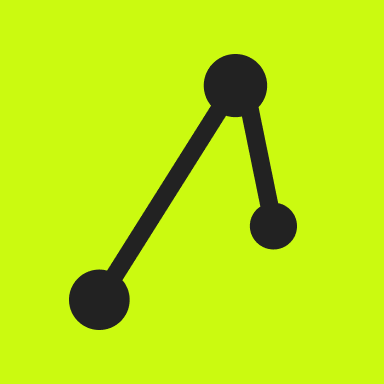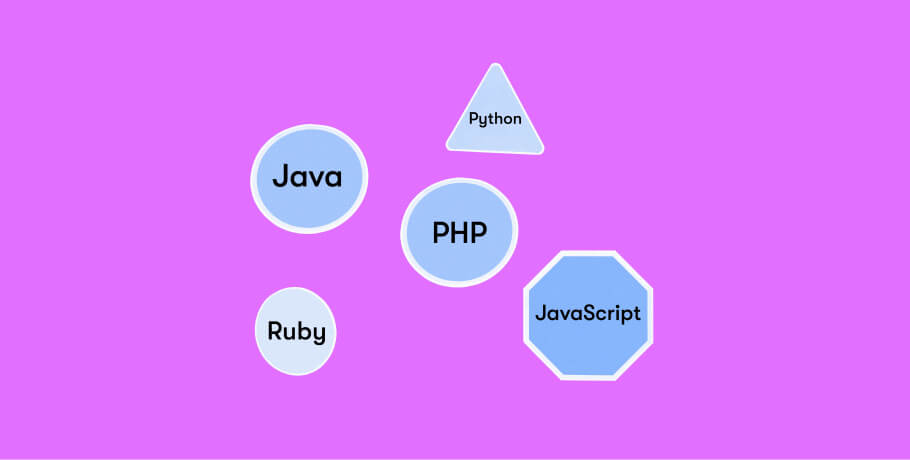In the world of PHP application development, Laravel and CodeIgniter are considered industry benchmarks (even though CodeIgniter may seem like an outdated option to many).
So which option should you choose? If you ask web developers around, we’re sure they’d have their favorites. And this might be because both these frameworks can be equally useful depending on the requirements of your project.
In this article, we’ll take a look at Laravel and CodeIgniter differences, and will compare them based on features, syntax, loading times, security, structure, and other similar factors. Having this information on hand will help you understand the advantages and disadvantages of both frameworks so that you can make the right decision, keeping all factors in mind.
What is the Laravel framework?
Before we dive further into the “advantages of Laravel vs CodeIgniter” debate, let’s first understand what Laravel is and what makes it a popular choice amongst programmers.
Laravel is an open-source PHP framework found on GitHub. This framework was created by Taylor Otwell, who took inspiration from Symfony, which is another PHP framework, and built it on model view controller (MVC) architecture.
Features of Laravel’s framework
- Artisan tool
Built as a command line user interface, the Artisan tool is like a developer’s version of Zapier (meaning, it allows them to automate repetitive, common tasks), so that they can bid manual labor goodbye. But that’s not the only task Artisan can do. To add context, you can use it to create projects, test functions, conduct migrations, and even build custom commands (if the built-in commands don’t seem to be fruitful).
- MVC architectural pattern
The beauty of an MVC framework is that you can separate web applications into different categories, thereby allowing you to get a compartmentalized understanding of what’s going on. Essentially, with MVC, you can divide your application into three distinct components: view (what your customers view when they visit your website), controller (how your application processes the actions they make on the website), and model (the data required to allow these actions). TL;DR version: MVC architecture allows developers to divide projects logically.
- Eloquent ORM
Keeping the MVC framework in mind, let’s expand on the section “model.” More specifically, we’ll elaborate on how it interacts with the relational object-oriented Eloquent. By using the Eloquent model, you can create, modify, and delete database tables. This is possible by adding PHP syntax as opposed to writing SQL manually. The best part? Eloquent ORMs (object relational mappers) are faster than most PHP frameworks.
- Community support
Alright, although we can’t technically categorize community support as a feature, it is an added benefit that cannot be ignored. So, here’s what you need to know: there is a thriving Laravel community of “web artisans” across the globe.
Aside from screencasts (also known as Laracasts) hosted by Laravel for its community members, there are many other ways for PHP developers to get support from the community on multiple platforms, and they are filled with people who are ready to help you cross the learning curve.
8 reasons why you might prefer Laravel to other systems
Wondering why is Laravel the recommended option amongst many of its competitors? Let’s see how it shines when compared to its peers.
- It’s one of the popular PHP frameworks known for robust application development and for creating dynamic websites.
- Since it is built using inspiration from Symfony, it uses a dependency manager (which allows you to manage your projects).
- It has a default blade templating engine, which allows you to add code to create unique layouts.
- Laravel comes with an inbuilt unit testing tool that helps you see how your applications will run.
- You can also integrate it with apps such as SparkPost, Amazon SES, Mailgun, Mandrill, STMP, and more.
- Laravel allows you to develop applications that can function in multiple languages (in other words, using Laravel can allow you to easily scale to multiple countries).
- This PHP framework offers support through its learning center, Laracasts, which has multiple free (and paid) videos that help you understand how to create code using Laravel.
- Google Trends recognizes it as one of the most sought-after PHP frameworks.
Top Laravel-based web solutions
Wondering which web solutions have seen the benefits of Laravel first hand? Websites like Worldwalking.org, Asgardcms.com, Laracasts.com, and web applications like My Rank, Toyota Hall of Fame, Startups.co, Neighborhood Lender, and CachetHQ are just some of the few lucky names that made it to the list.
What is the CodeIgniter framework?
Moving on with the PHP framework Laravel vs CodeIgniter debate, same drill as above: we’ll first explore what CodeIgniter is before expanding on how it compares against Laravel. Also, for the sake of this debate, let’s consider this as a “Laravel vs CodeIgniter 4” argument, as the versions before #4 of both frameworks doesn’t allow us to evaluate the present capabilities, and would be impractical.
CodeIgniter was introduced to the world in February, 2006 by Ellis Lab (and then continued with streamlined development at the British Columbia Institute of Technology).
Much like Laravel, CodeIgniter is an open source, web application development PHP framework. Both of them are also maintained on GitHub. While Laravel is based on the MVC model, it is relational object-oriented; CodeIgniter, meanwhile, is precisely object-oriented, and allows for hierarchical model view controller (HMVC) architecture to be implemented, which is an extension of MVC. But that’s about where the similarities stop. Let’s take a look at CodeIgniter’s unique features.
Features of CodeIgniter’s framework
- Easy development process
If easy web solutions are on your mind, then you would not go wrong with CodeIgniter. Not only is the framework easy to use; it’s also reliable and efficient. Moreover, it’s got an extensive library available online that you can use to build systems for you (we’re not saying you can’t make your own systems, but if you need a shortcut, there’s an option available). CodeIgniter is also easier to understand than most PHP languages, and it therefore allows you to create web solutions much faster.
- Allows little to no errors
We already covered that CodeIgniter is easy to use. But here’s the benefit its ease of use provides: better error handling. First off, you make a limited amount of errors because it’s easy to use. Second, it also has an interface and an error logging class, which allow you to detect errors, so you can rectify them as you go. It’s so advanced that you can write codes in single lines, too!
- HMVC architecture
Although built on the MVC architecture, CodeIgniter is not strict with its approach the same way Laravel is, giving its users more flexibility and freedom. To make things even easier for its users, it can be configured to allow hierarchical model view controller (HMVC) patterns to come into motion. HMVC structures are built to address the gaps MVC faces, such as it gives better support with organization, provides reusability of codes, and allows web solutions to become more extensible.
- Community support
Just like Laravel, CodeIgniter, too, has a thriving community of web developers and users. One of the most active spaces you’ll find is the CodeIgniter forum, which is neatly divided into discussions of several types. Aside from that, there are many other platforms on social media and on the web that you can explore.
6 advantages of considering CodeIgniter
Although CodeIgniter’s features speak for themselves, here are a few more advantages of the PHP framework to help you understand all the benefits you can get from it.
- If you’re in the middle of shifting servers and have CodeIgniter as the framework, then the migration would be without any hassles and/or disturbances.
- CodeIgniter also creates SEO-friendly URLs. That’s to say, it creates slugs that are well written and easy to understand, which is an added benefit as far as SEO is concerned.
- You can run tests on your code to see how you can best avoid errors in the final version.
- CodeIgniter can also develop faster than most PHP frameworks, thus ensuring that if you need a website soon, you’ll get there fast using the services of CodeIgniter.
- We touched upon how CodeIgniter is easy to use. Well, its ease of use stems from the theory that users should be able to create whatever they want. This also means that CodeIgniter offers multiple options for the customization of your code.
- This PHP framework uses XSS filtering security, which means that your code is free from any malicious attacks or threats.
Companies that use CodeIgniter for web application development
CodeIgniter has an impressive list of users. For example, companies like Ola, Accenture, and Buffer use it as a part of their tech stack. Aside from that, websites for the World Health Organization, G Shock, Public Record Reviews, Parchment, Which, and others were also made with CodeIgniter.
PHP CodeIgniter vs Laravel: a comparison
Ready for a side-by-side comparison? This table compares CodeIgniter 4 vs Laravel 8 performance, architecture, price, functions, community support, speed, security, and many other factors that would be essential to know in decision-making.
Comparison | CodeIgniter | Laravel |
Architecture | Built on MVC, but allows HMVC | MVC architecture for logical categorization |
Security | XSS filtering security | Passwords and built-in authentication features |
Speed | Faster than most frameworks | Slower than CodeIgniter |
Performance | Object-oriented, noted for its performance and speed | Relational object-oriented, popular option due its overall performance |
Functions | Easy development, error handling, HMVC architecture | Eloquent ORM, MVC architecture, Artisan tool |
Development costs | A CodeIgniter developer may charge around $61/hourly or more. | The average hourly fee of Laravel developers is $59, but it can go up to $100 or more hourly |
Client list | World Health Organization, G Shock, Public Record Reviews, etc. | Toyota Hall of Fame, My Rank, CachetHQ, World Walking, and more |
Community support | CodeIgniter forum and other communities | Laracasts and other communities |
Laravel vs CodeIgniter: performance
Let’s shed some light on CodeIgniter 4 vs Laravel performance. CodeIgniter can be used with either PHP 4 or 5. This, coupled with the fact that it has a low server requirement and easy validation, makes the jobs of programmers infinitely easier.
Programmers also have the freedom to explore as many functions as they want, and can easily and swiftly install the framework, too (which is an added benefit considering many frameworks may put up a fight as far as installation is concerned).
Although Laravel has a different set of features, it compares just as well. For example, you can scale far more easily with Laravel than you can with CodeIgniter. This is mainly because Laravel also has a strong list of characteristics such as Artisan, HTTP support, Eloquent ORM, MVC, and more — which allows it (and you) to manage larger tasks easily.
CodeIgniter vs Laravel: speed
CodeIgniter is one of the quickest frameworks out there. Not only is it speedy to develop, but it also has faster loading times (and this is not only when compared to Laravel, but also when contrasted against most PHP frameworks).
Although Laravel is not particularly well-known for its speed, there are a few options it offers which can help you with performance. For example:
- Remove functions and/or services that you don’t use regularly
- Add limit to the content in libraries
- Remove white spaces from the code
- Use session drivers that have a faster performance
- Create packages of your CSS/J assets (decrease them too while you’re at it)
- Optimize your code and images
- And do lots more!
Laravel or CodeIgniter: developers’ choice
For most developers, CodeIgniter is easier to use. While Laravel also provides ease of function, it still has a few rules and regulations in place. There’s also more freedom and flexibility with CodeIgniter, and it also provides better error handling.
So, all in all, CodeIgniter may be an easier option for most developers. But having worked with developers closely for so long, we know that they love a challenge and would be equally thrilled to take on both CodeIgniter and Laravel projects.
Which web framework is the best choice to build and scale your project — Laravel or CodeIgniter?
Alright, here’s our final verdict. The answer depends on the kind of project you have, what kind of features you want to use, and the level of experience your in-house developers have.
Let’s consider two situations:
- Situation A, where you want to build an easy, no-frills website
- Situation B, where you want to build a website to scale
Now, in situation A, we’d suggest you go with CodeIgniter as your preferred option. The reason? It’ll be faster to build, you’ll have better SEO scores, and it's easy to handle errors as well.
On the other hand, if you want to build a website that can support HTTP routes, then stick to Laravel, as CodeIgniter provides limited support.
If you’re in situation B, we suggest you take Laravel as your preferred option. The reason? Laravel has better features which allow it to build more complex structures.
That said, if you have no experience working on complex systems, CodeIgniter would be an easier framework to grasp.
FAQ

The EPAM Anywhere Editorial Team is an international collective of senior software engineers, managers and communications professionals who create, review and share their insights on technology, career, remote work, and the daily life here at Anywhere.
The EPAM Anywhere Editorial Team is an international collective of senior software engineers, managers and communications professionals who create, review and share their insights on technology, career, remote work, and the daily life here at Anywhere.
Explore our Editorial Policy to learn more about our standards for content creation.
read more

















